28
Apr
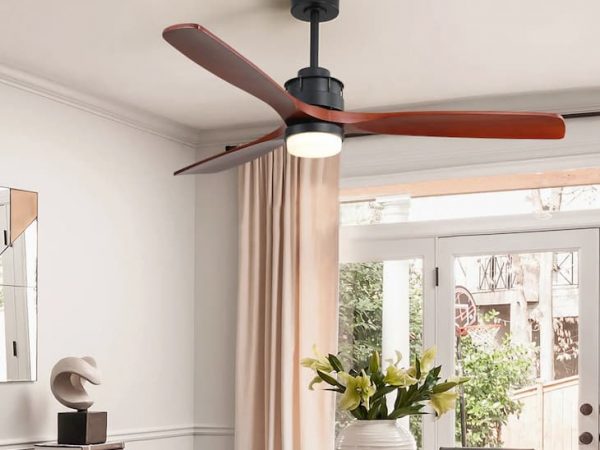
We may not realise it, but lighting has a significant impact on our interior design and mood. It has the power to create and change the atmosphere even more than the furniture and some accessories. Good lighting can make you feel relaxed, comfortable and cozy at home.
If you’re renovating your home or designing it from scratch, it’s always a good idea to start learning the different lighting options. Think about what’s the purpose of every room. Is it for entertainment? For relaxation? Or maybe for work? All of these rooms require different light levels and intensity. Of course, some lights can have double functions, just like the beloved ceiling fan.
The first ceiling fan appeared in India in the 17th century. It didn’t look like the ones we see today, but it had the same working concept. It was constructed from a cord and palm trees or cloth, and it was moved manually. In 1882, Philip Diehl, a German immigrant, created the first ceiling fan. A sewing machine motor powered it, and additional functions, such as the light bulb, made their appearance later.
Diehl maybe didn’t realise how important his creation will become. It’s one of the most widely used cooling systems that kept the original working concept, with some upgrades due to the advancement of technology. Ceiling fans help people save money on their electricity bills while keeping them cool in the summer and warm in the winter.
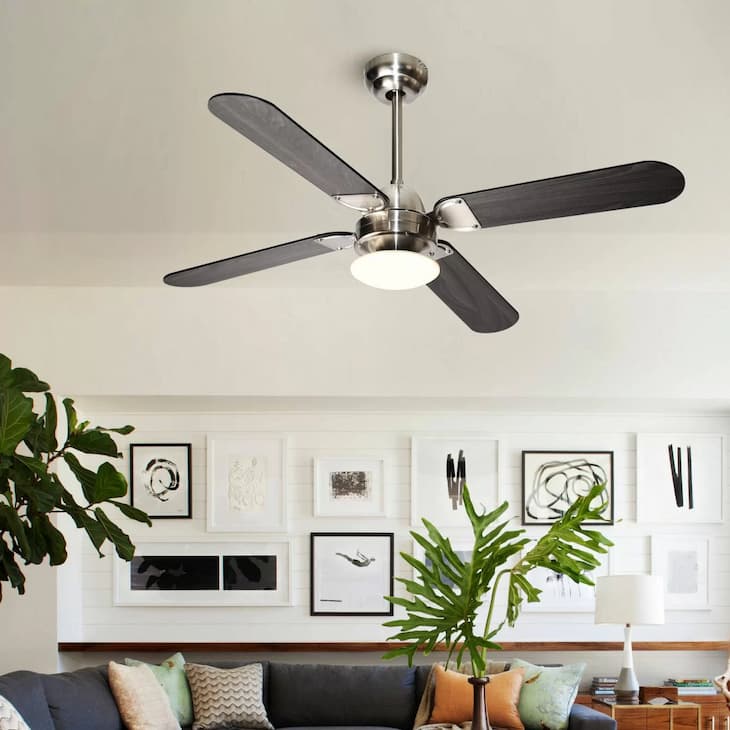
With so many options on the market, choosing the right ceiling fan can be overwhelming. There are some factors to take into consideration. But first of all, you need to find the right size, and then think about all the other features it might have.
The first step in choosing the fan is measuring the correct size. The size includes 2 fan dimensions, diameter and height. They’ll vary from one room to another depending on the room’s size and shape. You can adjust the fan’s height, but the diameter can’t be altered. There is a formula to help you calculate if you need smaller or larger light ceiling fans that will brighten up the space.
You’ll get the diameter by measuring the space between two blades, from the tip of one blade to the tip of the opposite one. If the fan has an uneven number of blades, measure one blade and multiply it by 2. Then, measure the size of your room. You can do this by multiplying the room’s length with the room’s width, and you’ll get the total square meters that give the room’s size.
The height of the fan is determined from the height of the room, but one standard placement is 2m off the ground. If the room is taller, the fan can go to 2.5-3m. Also, take into consideration the height of your family members because safety comes first.
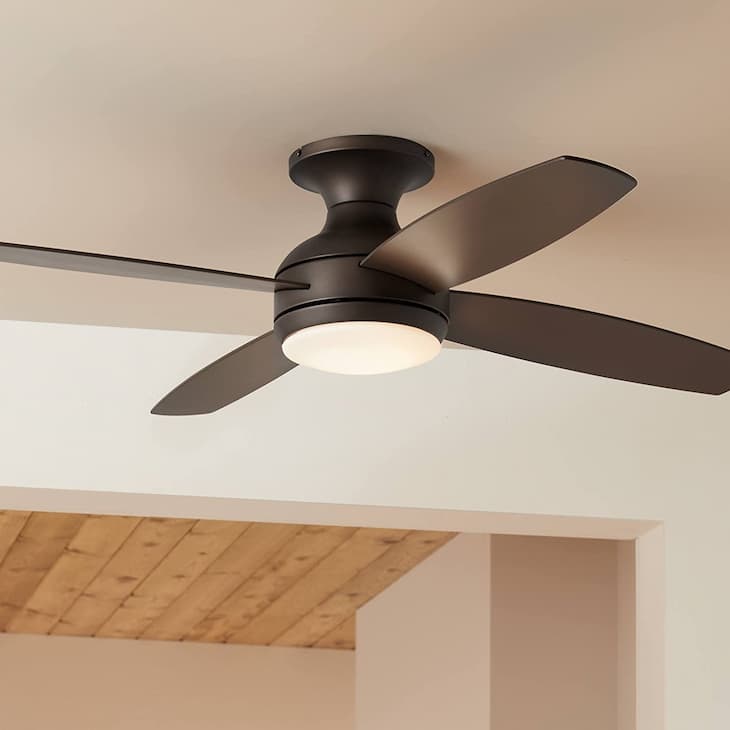
The blades might be the most important factor when looking for a fan. They have evolved since their starting point and designers created unusual designs with weird angles. Nowadays we have ceiling fans that go with every interior design, modern, contemporary, rustic, farmhouse, industrial etc. They all bring a certain flair to the ambience of the room.
The number of blades and their interaction with the motor will determine its strength and ability to cool or warm up the room. It’s a good thing that there is a difference in this aspect, this means you can choose what’s optimal for you and your energy-saving plan. Some of the most common blade styles are:
This design will look perfect in a farmhouse themed room. The fixture has a lot of blades that imitate the shape of a windmill. The ones that go indoors are made from wood, and those created for the outdoors are made from metal, but can sometimes have a faux-wood finish.
These fans are among the favourites on the market as they fit in modern and industrial interior designs. The blades and body of the fixture are enclosed in a metal cage. They tend to be smaller, so if you have a larger room and you’re a fan of these fans, think about hanging multiple fixtures. They will give the room a very chic and modern atmosphere.
The name of this fan says it all. Its modern look combined with a plane propeller style blades gives out a sophisticated look to any room. These fans usually have 3 blades, but there are edgier ones with only 2. another thing that contributes to their modern look is the shape of the blade with its rounded and narrow shape.
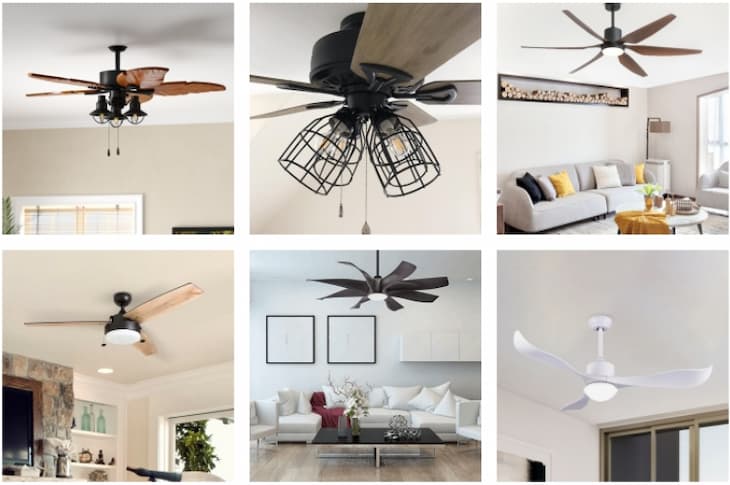
This one is similar to the propeller type, it’s just more angular and tends to have more than 3 blades. Their shape is usually rectangular and it will enhance the look of your interior with its fine wood finish.
These fans have multiple blades, similar to the windmill fans. They are arranged in a steel pitch and create a visual drama. Their sleek metallic finishes fit perfectly in industrial and modern interior designs.
With their steep design, these blades give out the perfect airflow. If you prefer efficiency, this ceiling fan with light is your best choice on the market. The high airflow and the playful design make this fan compatible with contemporary and modern homes.
These fans scream drama at first sight. The leaf-shaped blades can come in different styles that complement interiors with boho, tropical or nautical themes. The blades are wide and flat with a lower pitch. They are great for creating gentle breezes with a subtle airflow.
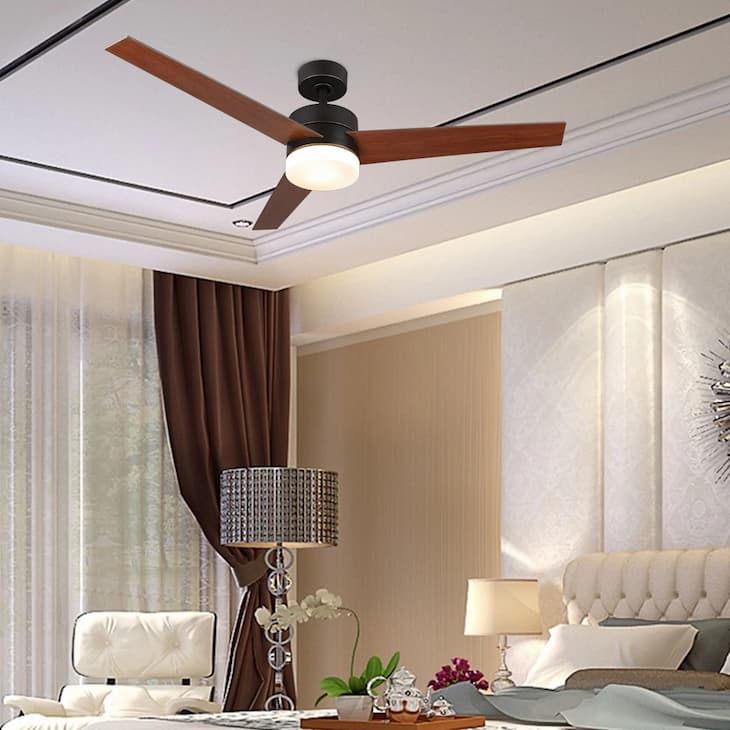
If your room doesn’t have enough lighting, buying light ceiling fans can add a new glow to the space. Their double feature fans will optimise your space. The modern designs have slim and minimalist lamps instead of the older designs where the lights are bigger and bolder. In combination with LED lights, ceiling fans are the perfect way to save on your electricity bill and reduce energy consumption.
Another important feature is the possibility to change the fan speed. Three speeds are the average, and 5 is ideal for any configuration. This way you can control the airflow and temperature with just one click. There are 3 ways to operate a fan: